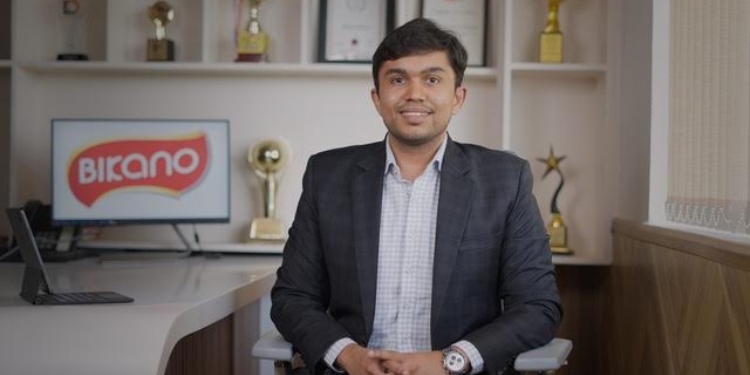How Do You Future-Proof Your Business in the Face of Rapidly Evolving Technologies?
In an era where technology changes at lightning speed, we sought insights from Founders and CEOs on how to future-proof businesses. From adopting proactive tech strategies to prioritizing automation and continuous development, we’ve compiled twelve strategic tips to maintain technological relevance over the long haul.
- Adopt Proactive and Adaptable Tech Strategies
- Invest in Team Education and Scalable Systems
- Build a Diverse, Tech-Passionate Team
- Embrace Change and Foster Team Innovation
- Cultivate Adaptability and Foresight
- Update IT Infrastructure and Promote Growth
- Proactively Adapt with Cloud Computing
- Encourage Continuous Learning and Strategic Partnerships
- Embed Adaptability into Business Model
- Innovate with AR and Social Commerce
- Integrate Modern Technologies for Competitive Edge
- Prioritize Automation and Continuous Development
Adopt Proactive and Adaptable Tech Strategies
We’ve been able to future-proof our organization by adopting a proactive approach to technology, one that prioritizes adaptability and continuous learning—taking our time to invest in modular technology solutions that can evolve alongside our content and user base.
For example, our advanced content recommendation engine utilizes sophisticated algorithms to analyze user behavior and preferences. This allows us to provide highly personalized game suggestions, enhancing the user experience and fostering deeper engagement.
In the end, we advocate for building a technology stack that can adapt to the changing needs of the industry and encourage others to embrace bold ideas to stay ahead of the curve.
Dane Nk, Founder, That VideoGame Blog
Invest in Team Education and Scalable Systems
To effectively future-proof a business in the face of rapidly evolving technologies, it’s crucial to cultivate both adaptability and a deep understanding of technological trends. From my experience at Future Fund, where we develop fundraising platforms for K-12 schools, a key strategy has been to continually invest in the education and training of our team. This not only keeps us abreast of current technologies but also prepares us to seamlessly integrate emerging technologies into our operations.
For instance, when artificial intelligence began gaining traction, we immediately incorporated AI training programs for our staff. This proactive approach has allowed us to leverage AI for enhanced data analysis and personalized user experiences, keeping our service at the cutting edge of educational fundraising technologies.
Moreover, maintaining a flexible technology infrastructure is essential. We prioritize modular and scalable systems, which allow for swift adaptation without the need for complete overhauls. This was particularly evident when we transitioned to cloud-based solutions, which provided us with the agility to scale our operations more dynamically and cost-effectively.
In my view, the essence of staying relevant in a technologically dynamic landscape is encapsulated by our approach: Adapt swiftly, learn continuously, and embrace the future proactively.
This mindset is what enables businesses like ours to not just survive but thrive amidst technological changes.
Darian Shimy, Founder and CEO, FutureFund
Build a Diverse, Tech-Passionate Team
In order to future-proof your business, you need to ensure your team is full of varied backgrounds and opinions when it comes to technology. The worst thing you can do is close your business off to different technological experiences and ideas.
You’ll need to lean on your team when it comes to innovation knowledge, and the only way to do that is to cultivate a team of unique backgrounds and people who are passionate about technology’s exciting present and even more thrilling future.
Lora Shaw, Vice President of Operations, Pet Palace
Embrace Change and Foster Team Innovation
In staying ahead of the curve in my digital marketing business, I’ve learned that embracing change is not just a choice but a necessity. It’s about being proactive, always on the lookout for new opportunities, and never settling for the status quo. We immerse ourselves in the digital ecosystem, absorbing insights and experimenting with emerging technologies, all while maintaining a human touch in our approach. By understanding the ever-evolving needs and preferences of our audience, we can tailor our strategies to resonate authentically and drive meaningful engagement.
Moreover, fostering a culture of adaptability and innovation within my team has been pivotal. We celebrate creativity, encourage collaboration, and empower each team member to contribute their unique perspectives. This dynamic environment fuels our collective growth and enables us to navigate technological shifts with agility and confidence. Ultimately, it’s this combination of staying informed, embracing change, and fostering innovation that allows us to future-proof our business and remain at the forefront of the digital marketing landscape.
William Hogsett, CEO, Seota Digital Marketing
Cultivate Adaptability and Foresight
At The Codest, future-proofing our business amidst rapidly evolving tech means cultivating a culture of adaptability and foresight. Here’s what works for us:
Continuous Learning: We prioritize a culture of learning and experimentation, where our teams stay curious about emerging trends. This mindset has empowered us to adopt tools like microservices and DevOps, making our workflows leaner and more scalable.
Research and Development: Our cross-functional R&D teams explore new technologies, pilot innovative ideas, and quickly assess their business impact. We’ve successfully piloted AI and machine learning projects that have kept our products leading the market.
Strategic Partnerships: Partnering with tech leaders helps us stay ahead. By working with specialized cloud providers, we’ve optimized costs while enhancing security and compliance.
Scalable Architecture: We design flexible, modular systems that allow for seamless tech integrations as market demands shift.
Client-Centric Focus: Listening to our clients ensures our tech roadmap aligns with their evolving needs. We’re data-driven, always anticipating challenges and priorities.
Scenario Planning: Regular scenario planning helps us anticipate potential disruptors, preparing us for different futures.
One crucial tip for long-term relevance: prioritize API-first development. Building applications that easily integrate via APIs ensures our services connect with new tech, partners, and platforms, helping us stay adaptable in a constantly shifting landscape.
Peter Karasington, Chief Product Officer, The Codest
Update IT Infrastructure and Promote Growth
At Parachute, we embrace technological changes by continually updating our IT infrastructure and investing in emerging technologies. This approach ensures that we remain competitive and can quickly respond to new challenges and opportunities in the cybersecurity market.
A strategic tip for maintaining long-term technological relevance is to foster a culture of innovation within the organization. We encourage our employees to pursue ongoing education and training, and we provide platforms for them to experiment with new technologies. This keeps our team updated with the latest industry trends.
Elmo Taddeo, CEO, Parachute
Proactively Adapt with Cloud Computing
Navigating the evolution of technology in the healthcare IT sector has taught me the critical importance of proactive adaptation and strategic foresight. One approach that has proven effective in future-proofing businesses in this area involves the integration of cloud computing and the utilization of scalable IT solutions. For example, my work in deploying cloud-based systems has significantly reduced overhead costs and improved operational flexibility, making it easier to adapt to new technologies as they emerge.
Moreover, staying ahead of the curve is crucial. Engaging IT consultants who are deeply versed in the latest technologies has allowed us to anticipate future trends and prepare accordingly. This preparedness is not just about adopting new technologies but also about aligning them with our strategic goals. A particular case in point is the development of a tailored IT roadmap for our organization, plotting out future enhancements and technology adoptions that align with our long-term operational requirements and budgeting forecasts.
Additionally, a focus on automation and digital transformation has played a pivotal role. For instance, automation of administrative tasks has reduced manual errors and improved efficiency, while digital tools have enhanced patient engagement and service delivery. Implementing these technologies wasn’t just about keeping up with trends but about critically thinking of how each technological tool could provide long-term value and resilience to our operations. This strategic adoption of technology ensures not only immediate gains but also, crucially, the sustainability and scalability of technological investments.
David Pumphrey, CEO, Riveraxe LLC
Encourage Continuous Learning and Strategic Partnerships
In the ever-changing landscape of technology, future-proofing your business is crucial. From my own experience, staying ahead involves a mix of proactive measures and strategic planning. One approach is to embrace a culture of continuous learning and adaptation within your organization. Encourage your team to stay updated on emerging technologies, attend relevant workshops, and engage in ongoing training programs. Additionally, fostering a culture of innovation and experimentation allows your business to test new technologies and adapt quickly to market changes.
Moreover, forming strategic partnerships with technology experts or startups can provide valuable insights and access to cutting-edge solutions. By collaborating with industry leaders and staying connected to the broader tech ecosystem, your business can gain a competitive edge and anticipate future trends. Lastly, investing in scalable and flexible infrastructure ensures that your business can adapt to technological advancements without significant disruptions. By prioritizing agility and innovation, you can position your business for long-term technological relevance and success.
Mujahid Shaikh, Associate Software Developer, UpInFifty
Embed Adaptability into Business Model
In the rapidly advancing field of technology, particularly in AI-driven SaaS platforms like Adaptify AI, staying relevant requires a blend of innovation, proactive adjustments, and a deep understanding of current trends. From my experiences leading product design and management across various tech sectors, a vital strategy is to embed adaptability directly into the business model and company culture.
For instance, during my tenure with various startups—from FinTech to data analytics platforms—integrating user feedback loops into the product development process has been foundational. In 2021, while working on a platform that supported 40,000 users with custom-trained AI models, we consistently refined and adapted our AI capabilities based on real-time user data and emerging tech trends. This not only enhanced the platform’s performance but also ensured its evolutionary growth alongside technological advancements.
Furthermore, fostering strong collaborations with technologically forward-thinking partners and maintaining a rigorous pace in learning new technologies is key. In 2019, when redesigning a search experience for 33 online marketplaces using React components, collaborating closely with both developers and data scientists allowed us to incorporate cutting-edge functionalities that significantly improved user experience. This kind of continuous innovation and partnership ensures technological relevance regardless of how fast the landscape evolves, making the business resilient and prepared for future advancements.
Hansjan Kamerling, Co-Founder, Adaptify AI
Innovate with AR and Social Commerce
In my position as President and CEO at AQ Marketing, dealing with rapid technological changes is part of our daily work in digital marketing. To future-proof our business, one effective strategy we’ve adopted is the integration of augmented reality (AR) in our digital campaigns. Since AR technologies do not require extensive hardware and are easily accessible, they offer us a way to continually innovate and keep our client engagements fresh and exciting.
For instance, during the 2020 pandemic, when in-person experiences were limited, we leveraged AR to create interactive filters on social media platforms. This not only provided a novel way for consumers to engage with products from their homes but also significantly increased the engagement rates for our clients’ marketing campaigns. It’s a testament to using current technologies to adapt to new market environments while preparing for future scalability and integration.
Another strategic approach is the focus on social commerce, integrating e-commerce capabilities directly within social media platforms. This method taps into the existing behaviors of social media users, facilitating seamless transaction experiences. By identifying these trends and incorporating them early into our strategies, we help both our business and our clients stay ahead of the game, ensuring long-term technological relevance. Through these practices, we not only maintain our competitive edge but also foster an internal culture of agility and forward-thinking.
Robert P. Dickey, President and CEO, AQ Marketing
Integrate Modern Technologies for Competitive Edge
Embrace technological advancements. It is important to stay abreast of technological advancements and be open to integrating them into your business operations to gain a competitive edge. Do not be afraid to take advantage of modern technologies, such as artificial intelligence, to create personalized customer experiences and improve internal operations.
When the COVID-19 pandemic hit the world, we were forced to shift from a traditional work environment to a remote one. This meant adopting the latest technological advancements that would help us maintain team cohesion and productivity despite the physical distance.
We embraced virtual meetings and collaborative software to maintain teamwork and understanding within our company. However, the shift in operation and our willingness to embrace technology led to an improved growth rate and employee retention rate.
Vladislav Podolyako, Founder and CEO, Folderly
Prioritize Automation and Continuous Development
To ensure our business stays ahead of technological shifts and maintains relevance, we emphasize several strategies. We prioritize automation, which streamlines operations and minimizes human error, allowing our team to focus on innovation and strategic tasks.
We also commit to continuous employee development, equipping our staff with the skills and knowledge to adapt to new technologies and market demands. Additionally, integrating our systems enhances operational efficiency and ensures our tools and processes work seamlessly together.
Konrad Martin, CEO, Tech Advisors
Related Articles




